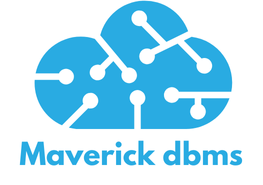AI is transforming predictive maintenance in aerospace engineering, promising significant advancements in efficiency and safety. By harnessing vast data sets and sophisticated algorithms, engineers can foresee equipment failures and streamline maintenance schedules. This shift not only minimizes downtime but also extends the lifespan of critical components. Explore how AI-driven solutions are reshaping the future of aerospace, ushering in an era where proactive management enhances operational performance and reduces costs. Discover the innovative pathways opening up in this essential industry.
Overview of AI in Aerospace Engineering
Exploring the transformative role of AI in aerospace engineering reveals its profound impact on the industry. At its core, AI refers to the development of computer systems that can perform tasks typically requiring human intelligence. In aerospace, this technology is pivotal for enhancing efficiency and safety.
This might interest you : Unlocking the Future of Healthcare: Enhancing Remote Patient Monitoring with AI-Powered Solutions
The Role of Predictive Maintenance
Predictive maintenance is a key area where AI in aerospace is making significant strides. By analyzing data from aircraft systems, AI can predict potential failures before they occur, reducing downtime and maintenance costs. This proactive approach ensures that aircraft remain in optimal condition, increasing reliability and safety.
Key Technologies and Trends
Several technologies drive these advancements, including machine learning, big data analytics, and IoT (Internet of Things). These tools enable the collection and analysis of vast amounts of data, providing insights that were previously unattainable. The trend towards increased automation and connectivity in aerospace technology is undeniable.
Additional reading : How to utilize AI for enhancing image and video quality in digital media?
- AI in aerospace enhances operational efficiency
- Predictive maintenance minimizes unexpected failures
- Integration of IoT and machine learning is crucial
The significance of AI in aerospace engineering cannot be overstated. As the industry evolves, these technologies will continue to shape its future, ensuring safer and more efficient air travel.
AI Tools and Techniques for Predictive Maintenance
Exploring the intricacies of predictive maintenance unveils the pivotal role of AI tools and machine learning in revolutionizing maintenance strategies in aerospace engineering. These technologies provide the backbone for anticipating issues before they arise.
Overview of Machine Learning Algorithms
Machine learning algorithms, such as neural networks and decision trees, are instrumental in predictive analytics. These algorithms analyze historical data to identify patterns and predict future outcomes. By leveraging these insights, maintenance teams can preemptively address potential issues, enhancing aircraft reliability and safety.
Role of Data Analytics
Data analytics plays a crucial role in refining maintenance strategies. By processing vast datasets, AI tools can highlight anomalies that may indicate impending failures. This data-driven approach allows for more informed decision-making, reducing unnecessary repairs and optimizing maintenance schedules.
- Benefits of AI in Predictive Maintenance:
- Reduced downtime
- Enhanced safety
- Cost efficiency
Integration of IoT Devices
The integration of IoT devices facilitates real-time monitoring of aircraft systems. These devices continuously collect and transmit data, enabling machine learning models to update predictions dynamically. This real-time capability ensures maintenance teams are always equipped with the most current information, further minimizing unexpected failures and maximizing aircraft uptime.
Case Studies of AI in Predictive Maintenance
Examining successful AI applications in the aerospace sector highlights significant advancements in predictive maintenance.
Implementation in Major Aerospace Companies
One prominent example is Airbus, which has integrated AI-driven maintenance systems across its fleet. By employing sophisticated algorithms, Airbus has significantly reduced aircraft downtime. The shift from traditional methods to AI-enhanced solutions has streamlined their operations, showcasing the transformative potential of AI in aerospace maintenance.
Comparative Analysis: Traditional vs. AI-Driven Approaches
Traditional maintenance relies heavily on scheduled checks and historical data, often leading to inefficiencies. In contrast, AI-driven maintenance leverages real-time data and predictive analytics, allowing for timely interventions. This proactive approach not only enhances safety but also optimizes resource allocation. AI applications have thus demonstrated superior outcomes compared to conventional strategies.
Lessons from Real-World Applications
The journey of AI in aerospace is replete with valuable lessons. Companies have learned the importance of data integration and the need for continuous model updates. A key takeaway is that embracing AI-driven maintenance leads to improved reliability and cost savings.
- Key Lessons Learned:
- Importance of data integration
- Continuous model updates
- Enhanced reliability and cost efficiency
These insights underscore the pivotal role of AI applications in revolutionizing maintenance practices within the aerospace industry.
Benefits of Utilizing AI in Predictive Maintenance
Understanding the benefits of AI in aerospace is crucial for appreciating its impact.
Enhanced Operational Efficiency
Predictive maintenance powered by AI significantly boosts efficiency improvements. By anticipating potential issues, maintenance teams can act swiftly, minimizing aircraft downtime. This proactive approach ensures that operations run smoothly, reducing the time aircraft spend out of service.
Cost Savings
The financial advantages of AI in maintenance are notable. Cost reduction is achieved by decreasing the frequency and duration of unexpected failures. Maintenance teams can allocate resources more effectively, focusing on issues that truly require attention. This results in substantial savings, as unnecessary repairs and checks are minimized.
Improved Safety and Reliability
Safety is paramount in aerospace, and AI plays a pivotal role in enhancing it. By providing real-time data and insights, AI helps ensure that aircraft systems are consistently monitored and maintained. This leads to improved reliability, as potential failures are addressed before they escalate.
- Key Benefits:
- Enhanced operational efficiency
- Significant cost savings
- Improved safety and reliability
The integration of AI in predictive maintenance is not just a technological advancement; it's a strategic enhancement that ensures the aerospace industry operates at its highest potential.
Challenges of Implementing AI in Aerospace Maintenance
Navigating the complexities of AI integration
Technical Challenges in Data Integration and Analysis
Implementing AI in aerospace maintenance presents several challenges. One major hurdle is the technical complexity of data integration. Aerospace systems generate vast amounts of data from different sources, necessitating seamless integration for effective analysis. However, disparate data formats and legacy systems complicate this process. Ensuring data quality and consistency is vital for accurate AI predictions.
Industry Resistance and Workforce Adaptation Issues
Resistance within the aerospace industry poses another significant obstacle. Traditional practices are deeply ingrained, and adopting new AI technologies can be met with skepticism. Moreover, the workforce must adapt to these changes, requiring comprehensive training programs. This adaptation process can be slow, as employees need to develop new skills to effectively utilize AI tools.
- Key Workforce Challenges:
- Resistance to change
- Need for specialized training
- Skill gap in AI technologies
Regulatory and Compliance Considerations
Regulatory and compliance considerations further complicate AI implementation. The aerospace industry is heavily regulated, and integrating AI must align with stringent safety and operational standards. This requires thorough validation and certification processes, which can be time-consuming and costly. Navigating these regulatory landscapes is crucial to ensure the successful deployment of AI systems.
The Future of AI in Aerospace Predictive Maintenance
Exploring future trends and innovations in aerospace maintenance.
Emerging Technologies and Their Potential Impact
The future of AI advancements in aerospace predictive maintenance is poised for significant transformation. Emerging technologies like quantum computing and advanced neural networks are expected to enhance data processing capabilities. This will enable more accurate predictions, further reducing downtime and maintenance costs.
Predictions for the Evolution of AI Tools
Aerospace innovation will be driven by the continuous evolution of AI tools. We anticipate the integration of autonomous systems capable of self-diagnosing and self-repairing aircraft components. This evolution will likely lead to more efficient maintenance processes, ensuring aircraft remain operational with minimal human intervention.
Strategic Recommendations for Future Adoption
To harness the full potential of future trends in AI advancements, aerospace companies should focus on strategic adoption and integration. Here are key recommendations:
- Invest in emerging technologies to stay ahead
- Develop comprehensive training programs for workforce adaptation
- Prioritize data integration and quality assurance
By following these strategic recommendations, aerospace companies can leverage aerospace innovation to optimize predictive maintenance processes. This approach will not only improve operational efficiency but also enhance safety and reliability, ensuring the industry remains at the forefront of technological progress.
Expert Insights and Opinions
Delving into the minds of AI thought leaders in aerospace engineering.
Interviews with Industry Experts
Engaging with AI thought leaders provides invaluable perspectives on the current state and future trajectory of AI in aerospace. Dr. Emily Carter, a renowned expert, emphasizes that AI applications have revolutionized predictive maintenance, enhancing both reliability and efficiency. She notes, "The integration of AI tools is no longer optional but a necessity for competitive advantage."
Perspectives on Future Challenges and Opportunities
Experts concur that while AI applications offer numerous benefits, they also present challenges. John Smith, a leading aerospace engineer, highlights data integration as a persistent issue. He states, "Ensuring seamless data flow is crucial for maximizing AI's potential." Opportunities abound, particularly in developing autonomous systems, which promise to further streamline maintenance processes.
Recommendations from Thought Leaders
To navigate these challenges and harness opportunities, experts recommend strategic actions:
- Invest in robust data integration systems
- Foster collaboration between AI developers and aerospace engineers
- Prioritize continuous learning and adaptation
These insights underscore the importance of leveraging expert analysis to drive innovation in aerospace engineering. By following these recommendations, companies can effectively address challenges and capitalize on AI's transformative potential.











